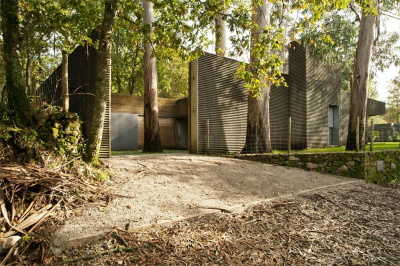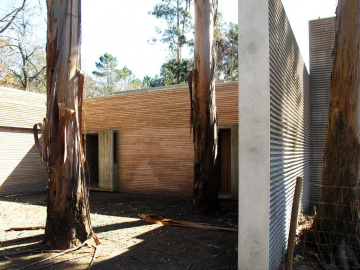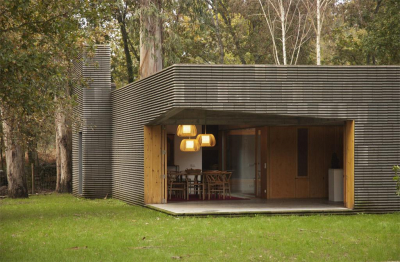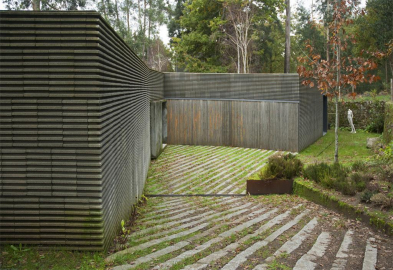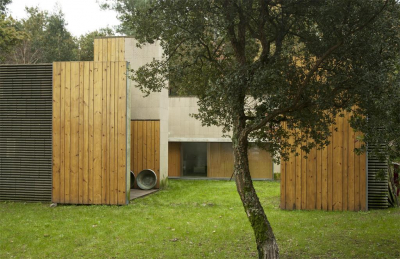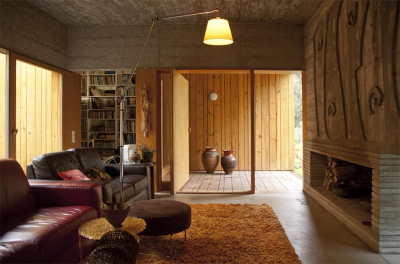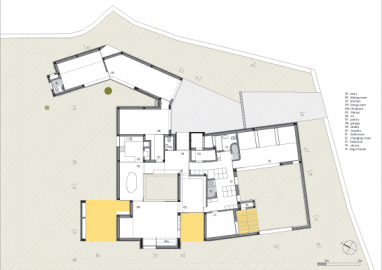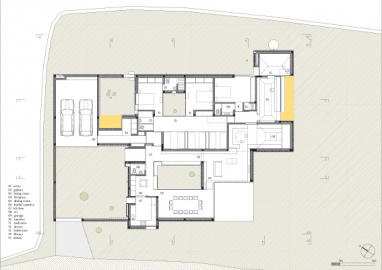Bouça das Cardosas Houses
Resilience and manufacture
Design of two specific family programs characterized by different levels of privacy and representation.
The lush materiality in the transition spaces with the outside, in contrast with its barren inside, where the objects of collection guarantee its comfort.
The need to transform the constraints imposed by the economic crisis into an opportunity throughout the construction process.
Two houses built for two couples (siblings). One projected for a couples daily life, the other for reunions on special occasions within an extended family. Both organized around several covered and open courtyards that both establish transitions between the inside and outside of the house and take on the function of central element, around which the spaces for wider socialization are generated. Volumes are globally built with light concrete and masonry, covered in the outside by acoustic correction panel cladding made of concrete and clay. In the courtyards different materials are used wood, brick, tiles, metal panels and light concrete panels cladding, thus responding to the needs of their several functions and exploring several sensory experiences light, touch, and, specially, sound and taste.
The volumes are developed in a single floor, taking on a dense character, low and horizontal, in contrast with the verticality of the existing trees. Their location constrained the implantation of the volumes and, partially, justified the existence of some courtyards.
The program for each house was specifically defined according to each familys sense of living representation, objectives, and needs. The different levels of privacy do not result directly from the functions of each space, as there are, for each function (sleeping rooms, living rooms, library, atelier) spaces with either a more collective or individual use. The systematic use of the courtyard allows for reading continuity between the surrounding spaces guaranteeing, however, individual space conformity that is translated, from the point of view of daily life, into the possibility for each individual to inhabit a specific space without ceasing to communicate with others.
The construction period was marked, in Portugal, by the beginning of the economic crisis, an aspect that branded in an indelible way the entire process, whether from the point of view of the project organization, or for the design choices and possibilities. In a first phase, the increase of the fuel prices left the builder without the capacity to maintain the initially set prices, thus forcing us to find alternatives for all the long-distance imported materials. In a second phase, the reduction in the available income of the clients and their ability to get funding from banks led to a series of changes in the project, to a progressive withdrawal of all the superfluous elements, and to the introduction of elements constructed by the client himself and architects.
If in the beginning, and following other projects developed in a public context, the organization of the project, desirably closed so that the work could be undertaken, could be understood as a power exercise, as the work process is mainly bureaucratic and passive, the circumstance meanwhile established led us to see the work as a communication exercise. In the execution process, now necessarily an open one, all stakeholders started to intervene builders, architects, and clients with a common goal, the feasibility of the work. Adjusting the project and its construction to available conditions and means of production was understood as an opportunity, exploring the knowledge and quality of the construction labor that we had. As an example, the apparent brick were fully manufactured on site; the mortar is made of several types of dirt and vegetation in the region, so as to adjust their consistency, aspect, and color.

